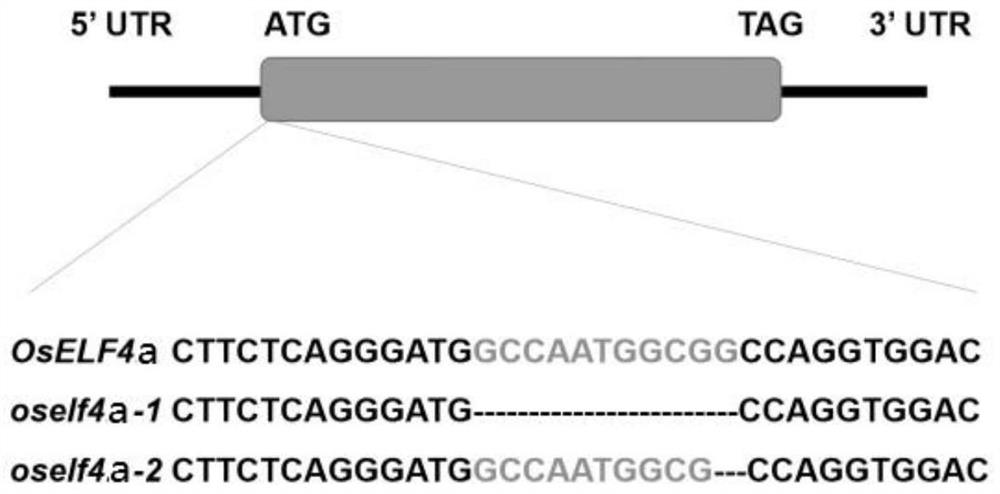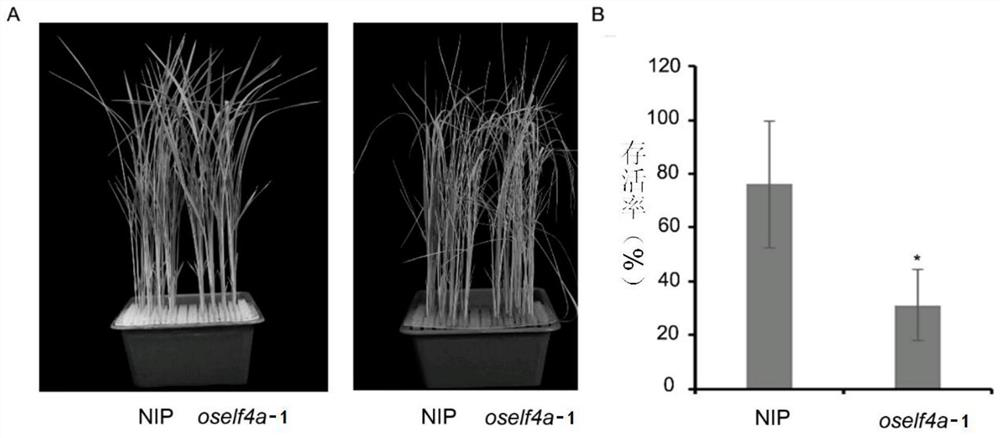Plant salt tolerance related protein as well as related biological material and application thereof
A biomaterial and salt-tolerance technology, which is applied to plant salt-tolerance-related proteins and related biomaterials and application fields, can solve the problems of reduced absorption, mutants that are not very salt-resistant, and disordered ion absorption by plant roots.
- Summary
- Abstract
- Description
- Claims
- Application Information
AI Technical Summary
Problems solved by technology
Method used
Image
Examples
Embodiment 1
[0085] Embodiment 1, the cloning of the rice oself4a coding gene related to salt tolerance
[0086] 1. Cloning of the gene encoding OsELF4a
[0087] The inventors of the present invention isolated and cloned a rice gene OsELF4a related to salt tolerance from rice Nipponbare, as shown in sequence 1 of the sequence listing, and named its encoded protein OsELF4a protein, as shown in sequence 2 of the sequence listing.
[0088] The total DNA of rice Nipponbare was extracted and amplified by PCR with primers F:ATGGAAGGTGATAGCTTCTCAG and R:CTAGCCGGGCCGGACACGCTTC. The PCR reaction program was: pre-denaturation at 94°C for 2 min; denaturation at 94°C for 30 s, annealing at 56°C for 30 s, extension at 72°C for 30 s, and 35 cycles; extension at 72°C for 5 min. The PCR products were subjected to Sanger sequencing. Sequencing results show that the nucleotide sequence of the PCR amplification product is sequence 1 in the sequence listing, its coding sequence is the 1st-354th nucleotide o...
Embodiment 2
[0089] Example 2. Application of OsELF4a in Rice Salt Stress Response
[0090] 1. Construction of OsELF4a-deleted mutant rice
[0091] First, use the CDS sequence (coding sequence) of OsELF4a to find the target sequence of CRISPR / Cas9, connect the target sequence to the CRISPR / Cas9 vector by PCR, and then use the method of Agrobacterium-mediated transformation to convert CRISPR / Cas9-OsELF4a The vector was transformed into the rice Nipponbare to obtain the OsELF4a-deleted mutant rice. The specific method is:
[0092] 1) Construction of the carrier
[0093]The DNA sequence shown in Sequence 1 in the sequence listing was used to design the target on the E-CRISPR website (http: / / www.e-crisp.org / E-CRISP / designcrispr.html), and the target ACCACGAGTCCCGGGCGC was obtained. Oligo sequences OsELF4a-OsU3T1F: ggcaACCACGAGTCCCGGGCGC and OsELF4a-OsU3T1R: aaacGCGCCCGGGACTCGTGGT were synthesized. According to literature (Ma X, Zhang Q, Zhu Q, Liu W, Chen Y, Qiu R, Wang B, Yang Z, Li H, Li...
PUM
 Login to View More
Login to View More Abstract
Description
Claims
Application Information
 Login to View More
Login to View More - R&D
- Intellectual Property
- Life Sciences
- Materials
- Tech Scout
- Unparalleled Data Quality
- Higher Quality Content
- 60% Fewer Hallucinations
Browse by: Latest US Patents, China's latest patents, Technical Efficacy Thesaurus, Application Domain, Technology Topic, Popular Technical Reports.
© 2025 PatSnap. All rights reserved.Legal|Privacy policy|Modern Slavery Act Transparency Statement|Sitemap|About US| Contact US: help@patsnap.com



